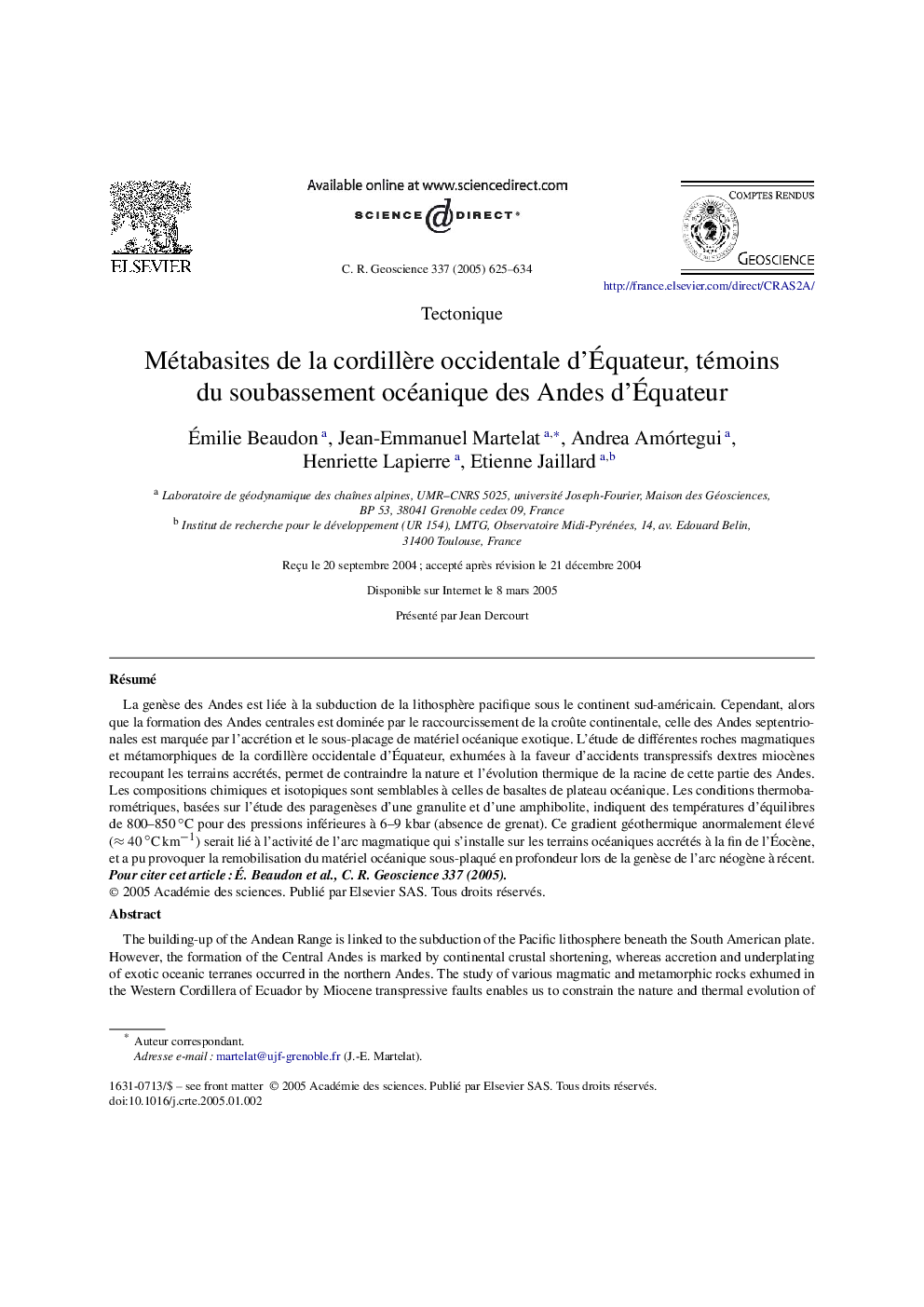| Article ID | Journal | Published Year | Pages | File Type |
|---|---|---|---|---|
| 9461882 | Comptes Rendus Geoscience | 2005 | 10 Pages |
Abstract
The building-up of the Andean Range is linked to the subduction of the Pacific lithosphere beneath the South American plate. However, the formation of the Central Andes is marked by continental crustal shortening, whereas accretion and underplating of exotic oceanic terranes occurred in the northern Andes. The study of various magmatic and metamorphic rocks exhumed in the Western Cordillera of Ecuador by Miocene transpressive faults enables us to constrain the nature and thermal evolution of the crustal root of this part of Ecuador. These rocks are geochemically similar to oceanic plateau basalts. The thermobarometric peak conditions of a granulite and an amphibolite indicate temperatures of 800-850â°C and pressures less than 6-9 kbar (lack of garnet). The abnormally high geothermal gradient (â40â°Câkmâ1) is probably due to the activity of the magmatic arc, which developed on the accreted oceanic terranes after Late Eocene times, and may have provoked the re-mobilisation of deeply underplated oceanic material during the genesis of the Neogene to Recent arc. To cite this article: Ã. Beaudon et al., C. R. Geoscience 337 (2005).
Related Topics
Physical Sciences and Engineering
Earth and Planetary Sciences
Earth and Planetary Sciences (General)
Authors
Ãmilie Beaudon, Jean-Emmanuel Martelat, Andrea Amórtegui, Henriette Lapierre, Etienne Jaillard,
